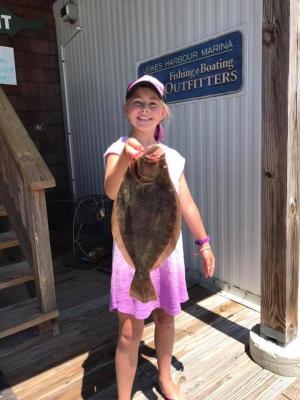If there is one thing that saltwater fishermen need to understand, it is tides and current. From the questions I receive and the ones I see on social media, it becomes plain to see that many do not.
In Delaware, we have two high and two low tides each day. They are caused by the gravitational pull of the moon against the surface of the water as we spin once in 24 hours and the moon goes around us once in every 28 days.
The difference between tide and current is the tide goes up and down while the current goes in and out. The tidal movement creates the current. As an example, as the rising tide fills Indian River and Rehoboth bays through Indian River Inlet, the moving water creates a strong current. That moving water doesn’t stop at the top of the tide; momentum keeps it moving in as it fills up both bays. Once both bays have reached their high-tide levels, the water will begin to flow out. This may be as much as an hour-and-a-half after high tide at Indian River Inlet. Those who fish the inlet on a regular basis refer this time period as going out on the bottom and in on the top.
Many years ago, when DuPont owned Stren line, they would bring outdoor writers in from around the country and take them to the DuPont Experimental Station in Wilmington where the chemists would explain the process of making monofilament fishing line.
After the show we would take the writers fishing. On one trip it was too rough to go out on a boat, so we ended up at Indian River Inlet. One writer from Illinois mentioned that the Mississippi River flowed that hard. I told him in two hours the water would stop dead still, then turn around and go back the other way. He said, “You’re lying.” I guess they don’t have much tidal flow that far up the Mississippi.
When planning a fishing trip, you need to consider the tide and current. For example, the Lewes-Rehoboth Canal fishes best in the summer on an incoming current. The water in the canal is shallow and will heat up quickly on a sunny day. The water in Delaware Bay is much deeper and will remain cooler. Incoming water will bring that cooler water to the canal and put the resident flounder in a feeding mood. It will also collect bait and flounder close to Roosevelt Inlet.
Bottom-fishing in Delaware Bay has been, for me, best during incoming water. I really don’t know why, but it’s true.
I will begin fishing around the Ferry Wall where the incoming current washes through the rocks and flounder watch for bait to push out into their waiting mouths. Cast tight to the rocks with a live minnow or a jig head and Gulp, and work it back across the bottom.
From there it’s the Inner Wall, the Outer Wall and then Reef Site Eight. Always work down current as fish will feed where they expect the bait to be.
When fishing deeper water, such as the Old Grounds, Site 11 or the Del-Jersey-Land Reef, you will find the current stronger around the new and full moons. This is because the moon is closer to earth during those periods and has a greater effect on the current. It will take more weight to keep your bait on the bottom than it will during the downside of these periods.
Some locations may only be fished on high water. The flats between White’s Creek and the Junction Buoy to Massey’s Ditch in Indian River Bay are a perfect example of such a location. When we had our trailer at Bayshore I would fish there on early mornings, before boat traffic became a problem, and had great success with flounder and trout. It was productive for two hours before and two hours after a high tide.
The best thing you can do is pay attention to the locations where you like to fish. Observe how the currents and tides affect the fishing, where do the rips show up, when is the water cleaner, when is it warmer, cooler? Then use this information to improve your fishing.
Fishing report
The weather has been terrible. Fishing was decent before and should be good once we get through this northeast blow.
Flounder were caught at the Old Grounds. Blues and shad at the Inlet on incoming water. Big rockfish at night at the Inlet on eels, plugs and shads. Some kingfish on bloodworms in the surf. A few blues on cut bait from the beach. Red-hot tuna action in the Baltimore and Poorman’s canyons.


























































